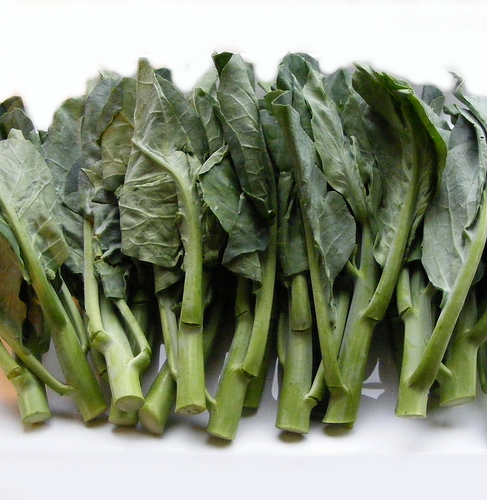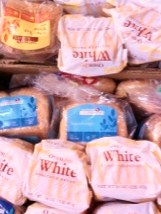Day 5- Saving Gai Lan
Today we got a box of gai lan, a Chinese broccoli, donated on Sunday from the Farmers’ Market. It was a Wednesday, and because of a funky smell swirling from the heavy, open-slit box and some glistening leaves peeking through that indicated rot, the program manager said the box needed some serious editing.
“Go through there and see what you can save, but I think it’s going to get pretty nasty at the bottom,” she said.
If there was ever a job for me, this was it, I thought with vigor as I strapped on some plastic gloves. I prided myself on my disdain for throwing away perfectly good food.
“It’s like throwing money down the drain,” was my typical refrain when I cleaned out our refrigerator every Sunday, raising my voice so my husband could hear me as I’d extract his wilted and browned iceberg lettuce, juices flowing in its plastic bag. If I was feeling even more annoyed, I would dangle the sorry lump around the living room corner to try and make him feel even worse.
I liked to call food waste Catholicism’s 8th mortal sin- spurred by my grandmother’s urging to finish everything on your plate- not because there were starving kids in China but because she had lived on nothing but cabbage for her entire childhood in Croatia.
And if there was ever a place where you could not afford to throw good food away, it was the Food Bank.
Gai lan kind of looks like kale, but its leaves aren’t as fanned or puckered. Healthy leaves are long, elegant and forest green. Bad ones have turned a hyper shade of lime because of a slick rotting oil spreading all over them. If I could find some of the former, surely this beautiful vegetable would delight many of Chinese clients who would actually know how to cook it.
So as I opened up the box and started sorting through the rubber-banded bunches, I was determined to save something. One by one I took out them out, trying to create a barometer of what could stay and what could go.
My co-worker watched me work.
“Ew,” she said. “I think they are all hopeless.”
After that, my quest was even more desperate. So I dove straight to the bottom of the box, where the rotten bunches were coated in a mucus soup. I compared them to three bunches that I had plucked from the top, where the most salvageable sat. There are some clean leaves here, I thought. Surely they could be snapped off and put into a stir-fry?
Then a swarm of flies flew out from underneath another of the worst bunches and the sorting table volunteers let out a collective – “Gross!,”
Defeated, I threw them all into the compost bin.
###


